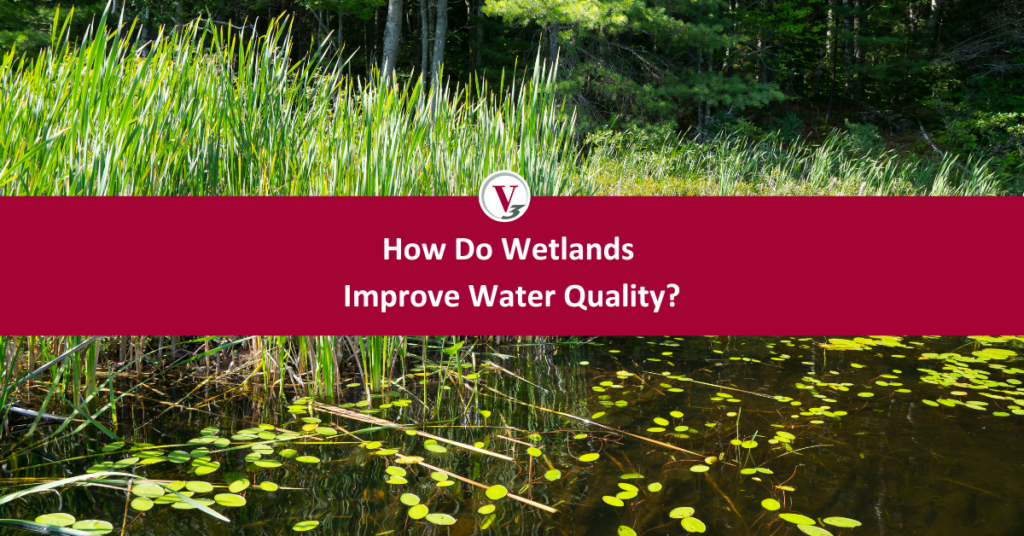Wetlands play a vital role in water quality, making them an essential contributor to healthy, vibrant communities and ecosystems. Learn more about the benefits of wetlands and how V3’s ecological restoration experts work with the land to improve water quality for all.

Why wetlands are important
Wetlands are some of the most biodiverse ecosystems on the planet, offering dynamic environments for fish, birds, reptiles, insects, and plant life to flourish. Each wetland creates a unique habitat specific to the local area, using native organic materials to support growth and development between indigenous species.
In addition to nurturing local flora and fauna, wetlands benefit humankind by offering natural solutions to community issues.
Wetland benefits include:
- Natural flood and erosion control: Wetlands help address stormwater management by absorbing and storing floodwater, as well as slowing water currents.
- Enhanced ecosystems: Wetlands provide habitats for aquatic wildlife and insects, bringing together the right plants and conditions for native species to thrive.
- Increased recreation: Wetlands invite communities to interact with the land, presenting opportunities for hiking, fishing, and more.
- Improved water quality: Wetlands act as a natural filter against pollutants, removing toxins and other detrimental elements from the water supply.
Wetlands and water quality
Water quality affects us all, and wetlands do a lot of heavy lifting to protect us against dangerous pollutants such as fertilizers, pesticides, and more.
Wetland plants help clean water in three different ways:
Sediment trapping
Streams, surface runoff, and rainfall spread out as it enters a wetland, significantly reducing its flow. As water begins to settle, particles become suspended in the water before getting absorbed by plant roots. This helps prevent pollutants and heavy metals from entering the groundwater.
Nutrient removal
By absorbing nutrients through plant biomass, wetlands improve water quality by removing nitrogen, phosphorus, and pesticides from agricultural runoff. Emergent and submerged plants create ideal conditions for microbes to convert nutrients into gaseous forms through a process called denitrification.
Chemical detoxification
Chemicals from industrial areas often make their way to our water systems. Fertilizers are absorbed by wetland plants and converted into less damaging forms as the plants decay, die, and recycle nutrients throughout the ecosystem. While there is a limit as to how many toxins a wetland can handle at a time, this natural process can also help aid in secondary sewage treatment.
Protecting and enhancing our wetlands
Wetlands are essential to water quality improvement. V3’s ecological restoration team is committed to preserving and creating these invaluable native ecosystems; our multidisciplinary experts have the passion and experience to revitalize wetlands and other natural areas. Contact us to learn more.

